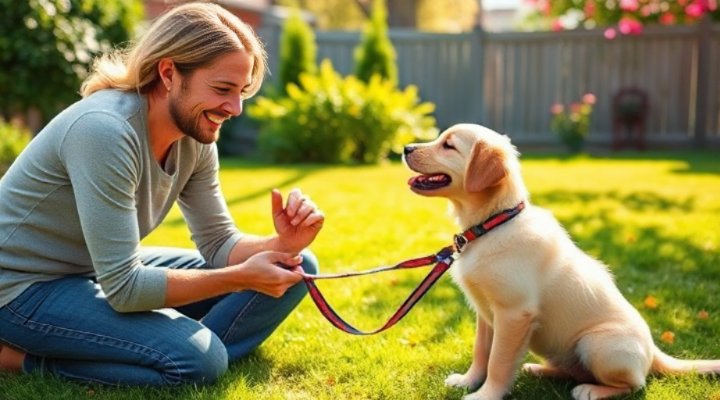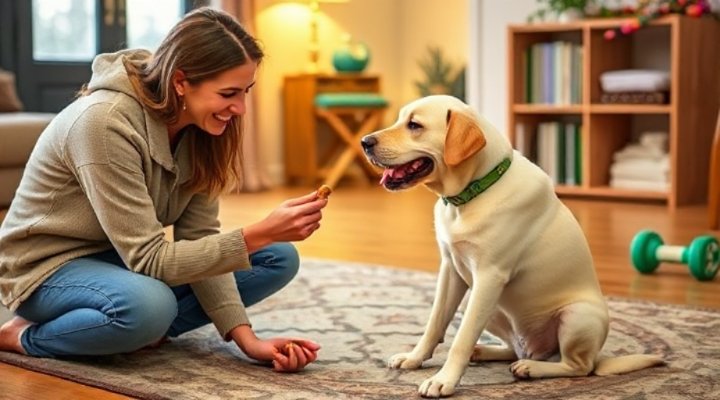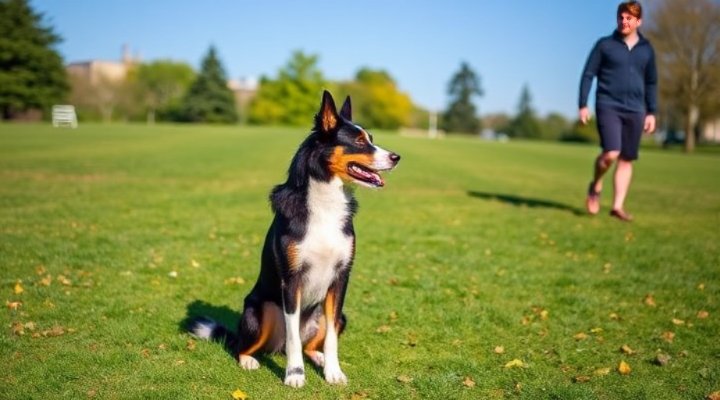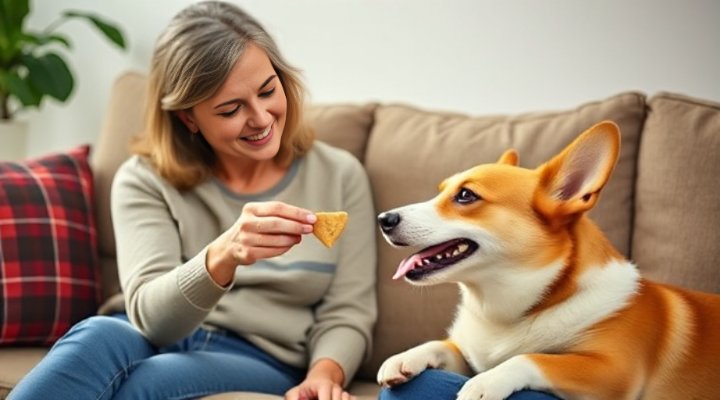Dog obedience training for beginners is all about laying a solid foundation for a lifetime of good behavior and mutual understanding. In other words, it’s not just about teaching commands; it’s about building trust and communication. For instance, when I first started training my rescue dog, Max, I realized that patience and consistency were key. Above all, using positive reinforcement makes the process enjoyable for both of you. Consequently, this guide will walk you through simple, effective steps to get started quickly, covering essential aspects like basic commands, common mistakes, and ways to strengthen your bond.

Understanding Dog Obedience Training for Beginners
Dog obedience training for beginners focuses on teaching fundamental skills that promote safety and harmony. That is to say, it involves commands like sit, stay, and come, which are crucial for everyday interactions. Moreover, this type of training uses positive reinforcement, such as treats and praise, to encourage good behavior. Similarly, it helps prevent issues like jumping or barking excessively. In addition, understanding your dog’s breed and personality can tailor the approach; for example, high-energy dogs might need more active sessions. Therefore, starting with a clear plan sets you up for success.
Why Start with Basic Obedience Training?
Beginning with basic obedience training establishes a framework for more advanced skills. Firstly, it builds confidence in your dog, making them feel secure. Secondly, it enhances communication, so you both understand each other better. Further, it reduces behavioral problems, leading to a happier home. For instance, a well-trained dog is less likely to run into dangerous situations. Most importantly, it strengthens your bond through shared activities. Meanwhile, resources like Petsmart dog training classes for beginners can offer structured support if you prefer guided learning.

Essential Tools for Beginner Dog Training
Having the right tools makes dog obedience training for beginners smoother and more effective. Certainly, a sturdy leash and collar are basics for control and safety. Additionally, high-value treats serve as powerful motivators during sessions. Likewise, a clicker can help mark desired behaviors precisely. But, on the other hand, avoid over-relying on tools; the real magic comes from your interaction. For example, I found that using small, soft treats kept Max engaged without overfeeding. Subsequently, investing in quality items from pet stores ensures durability and comfort.
Choosing the Best Training Treats
Selecting appropriate treats is crucial for positive reinforcement in dog obedience training for beginners. In other words, opt for small, low-calorie options to avoid weight gain. Moreover, consider your dog’s preferences; some might love chicken bits, while others prefer cheese. Similarly, homemade treats can be a healthy alternative, as discussed in our healthy cat treats selection guide, though always check for dog-safe ingredients. Therefore, experiment to find what excites your pup most. Meanwhile, keep sessions short to maintain interest and prevent treat fatigue.

Step-by-Step Guide to Basic Commands
Mastering basic commands is the core of dog obedience training for beginners. Firstly, start with ‘sit’ – hold a treat above your dog’s head and move it back until they sit, then reward. Secondly, move to ‘stay’ – ask your dog to sit, take a step back, and reward if they hold position. Further, practice ‘come’ by calling your dog enthusiastically and rewarding when they approach. In the same vein, consistency is key; repeat these steps daily. For instance, with Max, I practiced for 5-10 minutes each day, and he picked it up quickly. Consequently, you’ll see progress with patience.
Teaching the Sit Command
The sit command is often the first step in dog obedience training for beginners. To clarify, use a treat to lure your dog into a sitting position, saying ‘sit’ as they do it. Then, immediately give the treat and praise. Likewise, practice in different environments to generalize the behavior. But, however, if your dog doesn’t respond, avoid frustration; try again later. Above all, keep it fun to build positive associations. Meanwhile, resources like the American Kennel Club’s guide on teaching sit offer expert tips that align with positive methods.

Using Positive Reinforcement in Training
Positive reinforcement is the heart of effective dog obedience training for beginners. That is to say, reward desired behaviors immediately to reinforce them. Moreover, use a mix of treats, praise, and play to keep things exciting. Similarly, timing is critical; deliver rewards within seconds of the good behavior. For example, when Max came when called, I’d give a treat and a happy ‘good boy!’ to cement the action. Therefore, this approach builds trust and makes learning enjoyable. In addition, avoid punishment, as it can damage your relationship and cause fear.
Common Mistakes to Avoid in Positive Reinforcement
Even in dog obedience training for beginners, it’s easy to slip up with positive reinforcement. Firstly, don’t reward too late, or your dog might not connect the behavior with the reward. Secondly, avoid using low-value treats if your dog isn’t motivated. Further, inconsistency can confuse your dog, so stick to a routine. But, on the other hand, don’t over-treat; balance with verbal praise to prevent obesity. Most importantly, stay patient and positive, as frustration can hinder progress. Meanwhile, our article on advanced dog training techniques can inspire you once basics are mastered.

Building a Strong Bond Through Training
Dog obedience training for beginners isn’t just about commands; it’s a bonding experience. In other words, spending quality time together strengthens your relationship. Moreover, training sessions build mutual respect and understanding. Likewise, incorporating play into training makes it more engaging. For instance, after a successful ‘stay’, I’d often play fetch with Max as a reward. Consequently, this mix of work and fun deepens your connection. Additionally, a strong bond makes your dog more eager to please, easing future training. To sum up, focus on enjoyment to foster a lifelong partnership.
Incorporating Play into Obedience Training
Mixing play with dog obedience training for beginners keeps sessions lively and effective. For example, use a favorite toy as a reward for following commands. Similarly, short games of tug-of-war can reinforce ‘drop it’ or ‘leave it’. But, however, ensure play doesn’t distract from the training goal. Above all, let your dog’s personality guide the play style; some love chasing balls, while others prefer cuddles. Therefore, tailor activities to what your dog enjoys most. Meanwhile, check out Diamond puppy food with training tips for insights on combining nutrition and training for optimal health.

Overcoming Common Challenges in Beginner Training
Every dog owner faces hurdles in dog obedience training for beginners, but they’re manageable with the right approach. Firstly, if your dog is distracted, train in a quiet area first. Secondly, for stubbornness, use higher-value rewards or shorten sessions. Further, consistency across family members prevents confusion. In the same vein, if progress is slow, don’t give up; some dogs take longer to learn. For instance, Max had days where he seemed uninterested, but persistence paid off. Consequently, adapting to your dog’s pace leads to better results. Additionally, seeking advice from professionals or online forums can provide support.
Dealing with Distractions During Training
Distractions are a common issue in dog obedience training for beginners. To clarify, start in a low-distraction environment and gradually introduce challenges. Moreover, use commands like ‘watch me’ to regain focus. Similarly, keep sessions short to maintain attention. But, on the other hand, if your dog ignores you, avoid yelling; instead, move to a quieter spot. Most importantly, practice patience, as overcoming distractions takes time. Meanwhile, authoritative sources like the Humane Society’s dog training guide offer proven strategies for focus and behavior management.
In conclusion, dog obedience training for beginners is a rewarding journey that builds a foundation of good behavior and a deep bond. By using positive reinforcement, mastering basic commands, and staying consistent, you’ll set your dog up for a happy, well-adjusted life. Remember, every dog is unique, so adapt these tips to fit your furry friend’s needs. Keep it fun, be patient, and enjoy the process – you’re not just training a dog; you’re nurturing a lifelong companion.
Related Keywords: dog training basics, beginner dog training, positive reinforcement training, basic dog commands, puppy obedience training, dog behavior training, training tips for new owners, canine obedience skills
